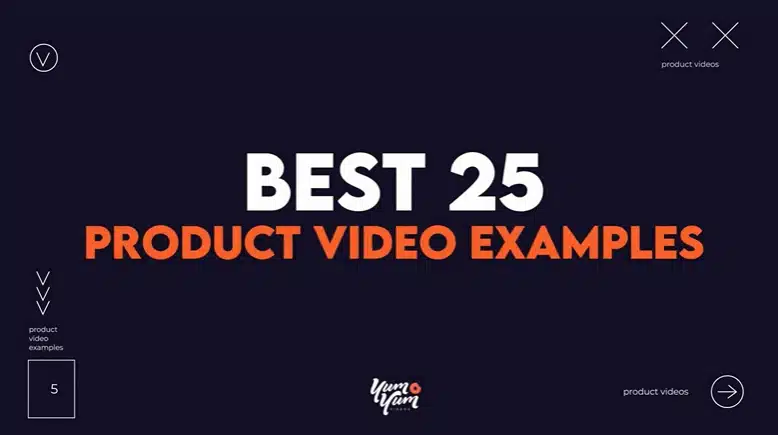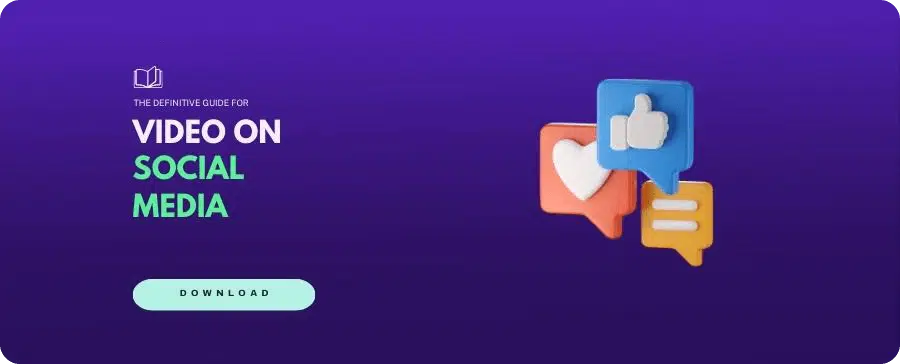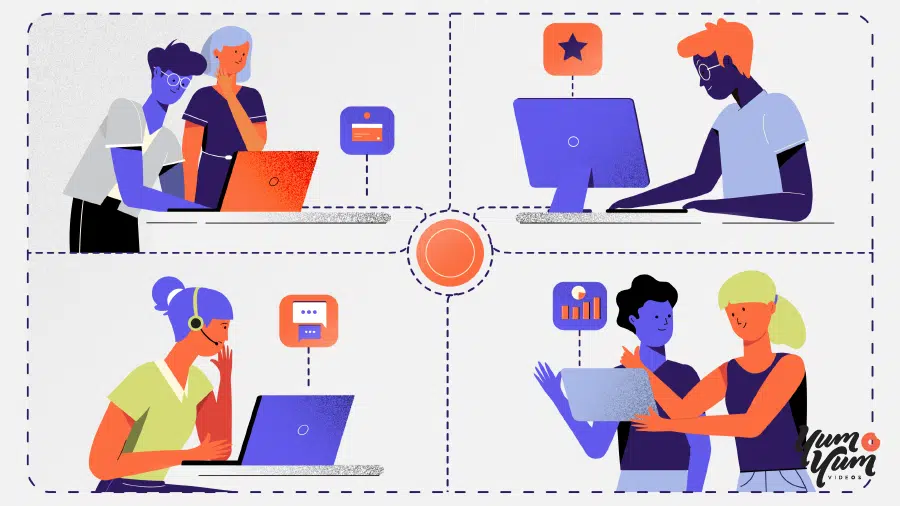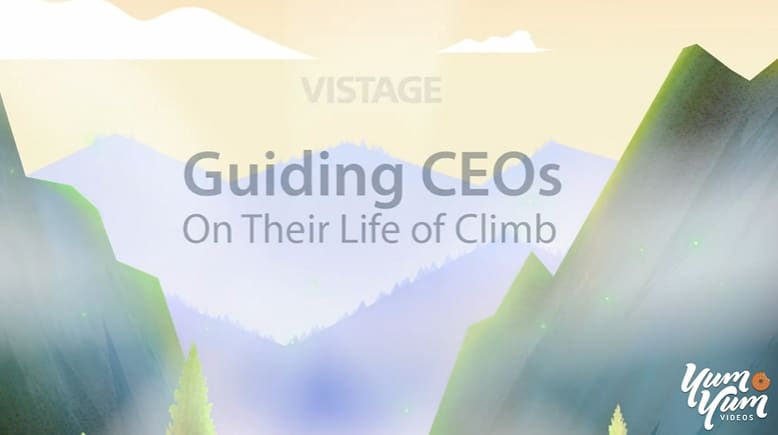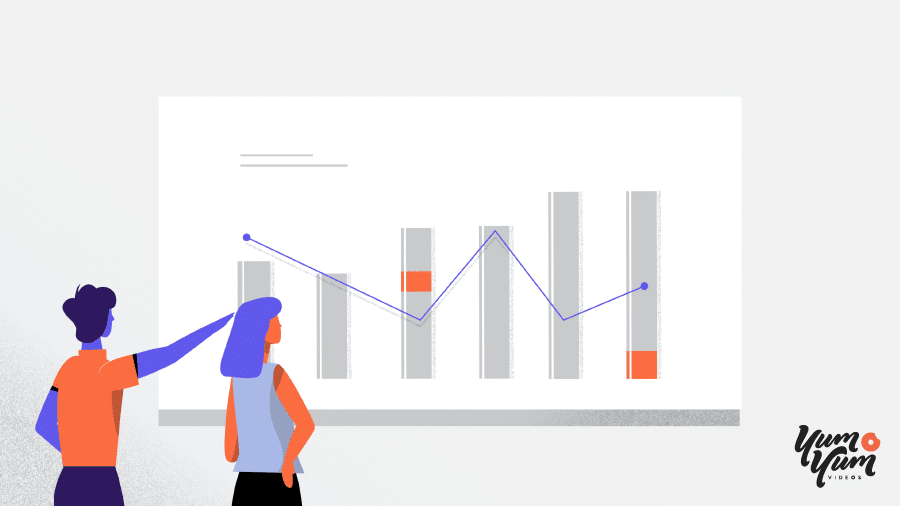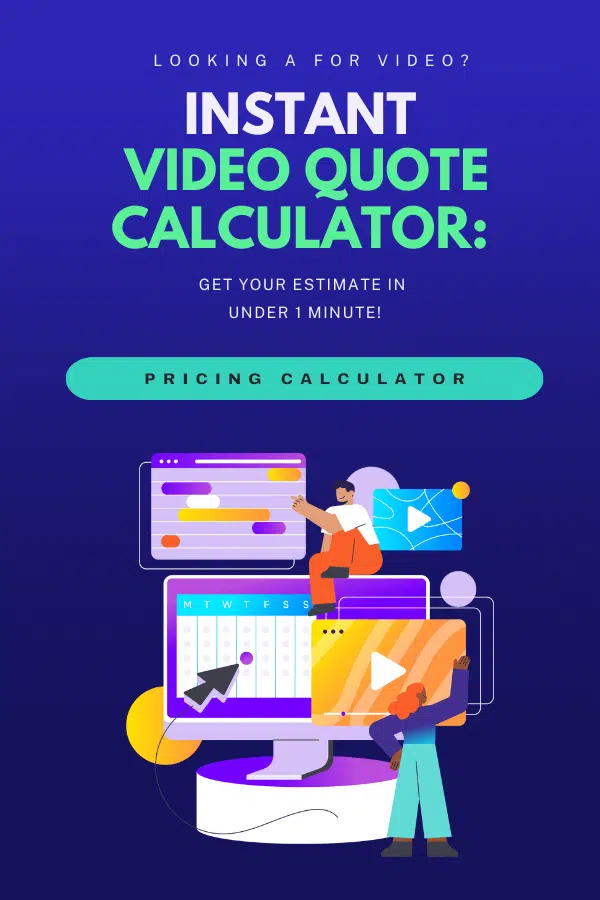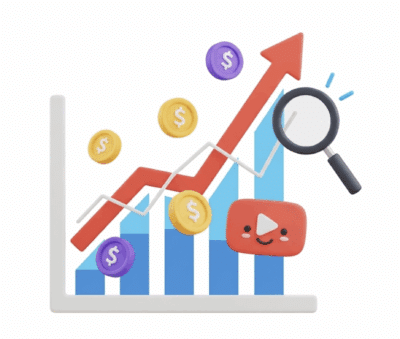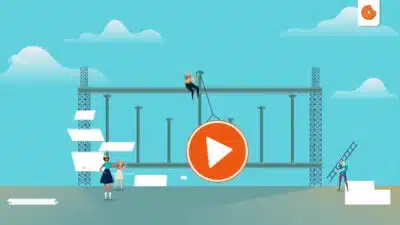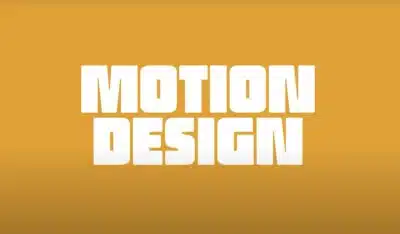10 Stats You Didn’t Know About the Human Attention Span!
27/02/24
Author: Florencia Corazza
11 min reading
Marketing
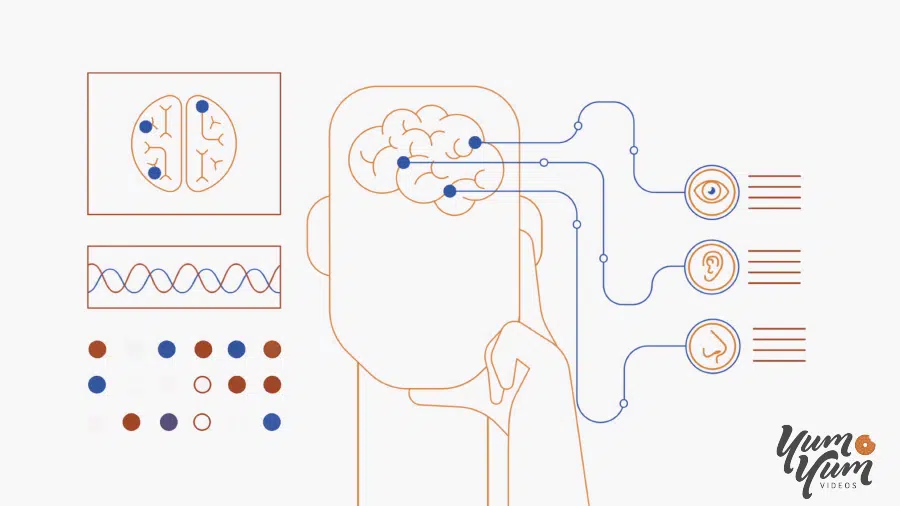
In the past few years, the human attention span has become widely discussed. A lot has been said about this topic: that now goldfish have better concentration than us, that our attention is growing weaker every year, and that younger generations simply can’t focus. Deciphering what’s true and what’s simply a rumor can be hard, but every video marketing agency and business owner can attest that piquing your audience’s curiosity online feels more challenging than ever.
Data can give us valuable insights into what’s happening around an issue, but context is crucial to properly understanding it. That’s why, in this article, I’ll be covering some of the most important statistics you need to know about people’s average span of attention in 2024, reflecting on where these changes come from and how they can affect you and your online presence and video marketing strategy.
Let’s take a look!
Table of Contents
1. The Average Human Attention Span Is Less Than 10 Seconds Long
First things first, let’s go over the basics and answer the common question of what is the attention span. This concept refers to the length of time a person can focus on a task before getting distracted, that is, being involuntarily drawn to a different activity.
According to studies, today’s average human attention span is 8.25 minutes, and if that doesn’t sound like much… well, it’s because it isn’t. Attention is crucial because focusing on a topic for long periods allows people to develop listening and analytical skills that will help them make decisions later on.
After all, if they don’t even watch your product video explaining what it has to offer, they will never be tempted to buy it!
2. Your Focus Is Even Worse When Using Screens
To add to the previous Microsoft study, Professor Gloria Mark analyzed the attention spans of people while they’re interacting with screens. That is, how well they could focus while being on their cell phones or tablets, for example. In 2004, a human paid, on average, 2,5 minutes of attention when connected to a device. However, today, that number has dropped to just 47 seconds.
The interesting thing about this data is that, unlike what happens with other tools, using our cell phones more seems to make us worse at it. Take a book, for example. If you’re a passionate reader like me, you’ll find that the more books you read, the better you become at immersing yourself in the story.
With screens, quite the opposite happens: the more we use our phones or tablets, the less we can focus on the content we’re actually seeing. So the next time you feel like scrolling through your phone leaves you unsatisfied, here’s why!
3. Americans Check Their Phones 144 Times a Day
As you can probably tell already, distractions have a direct impact on how long people can focus. The mere presence of an attractive stimulus makes you more likely to get sidetracked by it and lose attention. The biggest proof? Reviews.org’s survey which discovered that the average American checks their phone 144 times a day.
The scientific explanation for this fact is that humans aren’t designed to spend such a significant amount of time focusing on a single topic. After all, in nature, we had to be constantly on alert and scanning our surroundings in search of danger. Nowadays, the risks of being attacked by a bear are lower—but never null!
However, that rectangular device you use to watch cool animated videos when notifications pop up provides the satisfaction our active brain just craves.
4. Gen Z Has a 1-Second Span of Attention
Are you thinking of launching some amazing product ads targeting young people? Well, you better reconsider… Just kidding! Simply keep in mind that you probably won’t win over any prospects if you don’t catch their gaze in the first milliseconds.
The average attention span of a person varies with age, and statistics show that younger people tend to have the shortest spans among all generations. In fact, Gen Z loses active attention to advertising after just 1.3 seconds.
That’s not even enough time to count as a view on most social media platforms!
5. Are Screens to Blame for Short Attention Spans?
All the data and trends I’ve mentioned so far might be making you feel worried or maybe even guilty about your screen usage. After all, that seems to be the clear culprit here, right?
Well, while it might be true that screens and handheld devices, in particular, are quite distracting because of their constant availability of information and flow of notifications, there might actually be a bit more to it.
In fact, a study has found that 89% of smartphone interactions are actually initiated by users. That means that screens and their notifications are to blame for only 11% of interactions. Even though the pool of participants was rather small, the results still make sense, considering that our brains need excitement and social connection.
As I’ve mentioned before, we aren’t wired to stay on the same task for hours, and we crave novelty. Checking our messages or hitting play on that cute whiteboard video on our screen actually releases a small dose of dopamine, rewarding us for the distraction and reinforcing the habit.
So, it can be said that the blame is shared between the instant satisfaction that screens provide and the way our brains reward us when we give into them.
6. Multi-Tasking Can Be Very Harmful to Your Attention Span
Nowadays, there seems to be a widespread belief that multitasking can help you obtain better results. However, tackling different activities at the same time is harmful to our ability to focus. As the old saying goes, Jack of all trades, master of none.
When we try to do too many things at once, our brain has to switch between tasks constantly. In this matter, our good friend Professor Mark discovered that when your attention is diverted from your current activity, it takes about 25 minutes to focus again. This means you’re wasting more time jumping between tasks than you would if you just waited to finish one before starting the next.
So, pay attention to that work meeting and check the related training videos some other time!
7. Older People Pay More Attention but Can’t Multitask
If you still have doubts about the last stat, here’s one that helps shine a light on the veracity of the matter. Studies show that Baby Boomers can have an average span of attention of up to 36 minutes, which feels like ages, taking into consideration the numbers we’ve been seeing so far.
The Silent Generation, made up of those born between 1925 and 1945, has the longest attention span. According to the same study, their inability to multitask may be one of the causes of that. People aged 60 and above perform poorly in tasks that require dividing their attention between multiple sources, but this has allowed them to maintain the highest concentration when focusing on a single activity than any other generation.
8. The Human Attention Span Is Affected by How Emotionally Engaged We Are
After all the data we’ve covered so far, you may be worried that the only solution to your audience’s lack of attention might be creating promo videos targeting elderly customers. However, London’s King College showed that there are still 42% of people who use the internet to research information and don’t think their attention has become worse at all.
According to the study, these so-called ‘positive multi-screeners’ don’t suffer from the internet’s ample consumption possibilities because they use it as a tool to research topics they’re interested in. That’s because the way we pay attention to a specific task is largely dictated by the expectations we have for it (so there’s still plenty of room for educational video production, at least!)
In other words, if you do something you enjoy, you’ll have an easier time remaining focused. What this shows brands and content creators is that by coming up with pieces that are engaging and closely related to their audience’s interests, chances are high that they’ll be willing (and able!) to pay attention to them even beyond any average human attention span statistic.
(Explainer video production by Yum Yum Videos.)
9. A Student Can Pay Attention for 20 Minutes
As you can see, when you’re heavily involved in the topic you’re focused on, the human attention span increases. That’s also the case for students whose focus can last up to 20 minutes in a lesson—and I’m talking about young people here, not only 60-year-olds!
You may be wondering, wasn’t Gen Z’s attention span just a second a few stats ago?
The truth is that attention is also goal-oriented. Through experience, we gather information about what normally happens in given situations and what we can expect, which directly affects how we process information. When studying, young people can picture a clear goal of what they’re trying to achieve through their concentration, which allows them to stay focused. Fun fact: both motion graphics and infographic videos utilize the same goal-oriented principle to generate visuals that help keep viewers engaged and paying attention until the end.
10. So Do Goldfishes Have Better Attention Spans Than Humans or Not?
A few years back, Time magazine made the ‘startling discovery’ that a goldfish can focus for up to 9 minutes—longer than the average human attention span I already mentioned! However, some people put these facts in doubt, and with good reason. The Microsoft study measured people’s focus by asking them questions, but a person’s concentration varies depending on whether they’re studying, working, or just scrolling through Instagram looking at popular animation companies’ portfolios!
Moreover, if studies on humans don’t give universal, indisputable data, we cannot help but wonder—how did anyone calculate a goldfish’s attention?! Well, the myth about a goldfish’s average attention was actually conceived to make pet owners who kept these animals in teeny-tiny bowls feel better.
Similarly, Microsoft’s study became so popular because it made individuals feel better that they were not the only ones suffering from the negative effects of digital overuse.
The lesson to learn from this is that if your audience isn’t watching your content to the end, short attention spans aren’t the only ones to blame. Maybe you need more engaging animated video production or more compelling video storytelling to improve your pieces, but underestimating your viewers isn’t going to help you improve.
And if fish do happen to be smarter than us, that’s just because they don’t have cell phones yet!
Extra Stat on the Importance of Stats: Associations Considered Shortening Games Due to Short Attention Spans! (Thankfully, They Didn’t)
Did you know that, in 2015, the NBA was considering shortening games due to the shortening human attention span? Moreover, the MLB is currently also worried that social media is distracting users and taking them out of games. That’s because, in the past decade, they have seen a gradual decline in game attendance and television viewership.
Luckily, the NBA and MLB didn’t follow through with their ruminations. However, this seemingly superfluous piece of information tells us that no matter how big you are or how great your animated ads are, at some point, you may feel like people aren’t paying enough attention.
Although adapting your content to attention spans is important, deciding to change or cut something that works the way it is can be even more detrimental to your brand. If you have good YouTube content ideas, you will attract the views you deserve, no matter their length.
Wrapping Up
Now, we’ve discussed average attention spans and how they have become a tough barrier for brands to overcome (more so when your content deals with complex topics; like it often happens with healthcare video production, for example). Yet the fact remains that Social media marketing has provided unique opportunities for businesses, even if short-form content has led to an easily distracted audience, and conveying information to your potential customers sometimes feels harder than ever.
However, not all is lost in this new year of our digital era. Statistics can feel overwhelming, but they also show clearly that people are willing to make an effort and pay attention to the content they feel drawn to. So focus on creating attractive pieces that attract attention—and if that doesn’t work, you can always make them cringe with bad jokes!

Florencia Corazza – Content Writer and Co-Editor
A skilled writer, translator, and co-editor for our web and blog content. As a self-defined "wordsmith," she’s talented in adapting the latest marketing news into all kinds of digital formats. If she’s not watching the latest Sci-Fi show on Netflix, then can find her tending to her perfectly reasonable number of plants.
